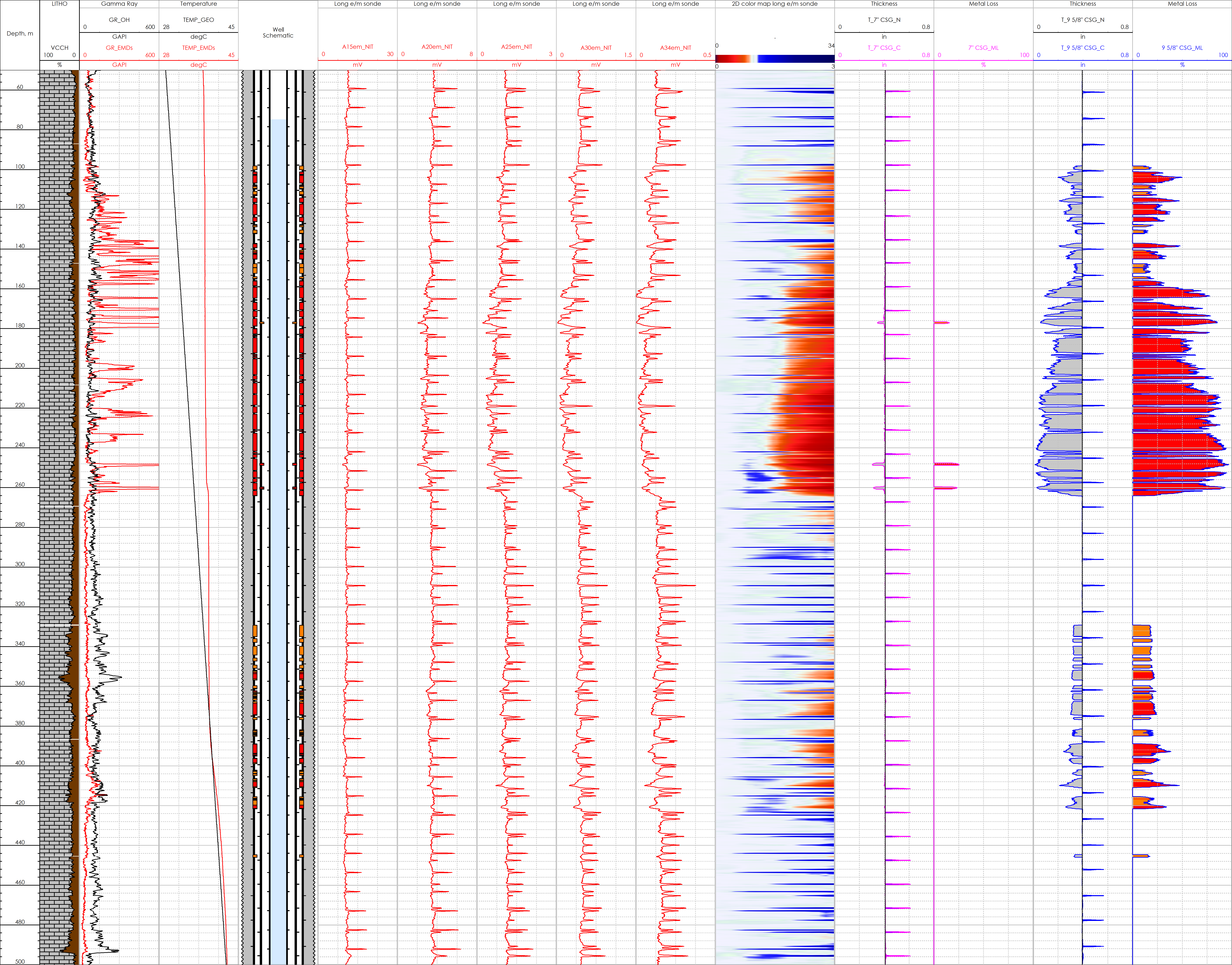Tool Overview
The Pulsed Electromagnetic Tool is a non-destructive corrosion logging tool which was designed to measure the individual wall thickness of concentric pipes in a single run. The latest generation of this tool provides quantitative wall thickness measurement for up to 4-5 barriers.
Main Advantages
- Measures individual wall thickness of concentric pipes in a single run.
- No special well preparation requirement prior to logging e.g., scraper etc.
- Survey can be conducted in the presence of any type of fluid oil, water, gas.
- Presence or absence of cement behind pipes will not affect data quality.
- The unique design of sondes allows each coil to function as generating and receiving modes. This helps minimize tool length thus facilitating ease of operation in the field.
- The tool also incorporates Gamma ray, Temperature and Pressure sensors, therefore capturing additional information in a single run.
- The presence of multidirectional sondes can identify the type of defect, especially in the first barrier.
The advantages listed above make this tool the most cost-effective corrosion evaluation tool in the market.
The tool’s high resolution and sensitivity are achieved through a large dataset acquired from the electromagnetic sondes. Data processing done with proprietary software and metal loss calculation is based on the best match between real decay and calibrated decay. A huge calibration library is incorporated into the software and minimizes error in the metal loss calculation.
Integrity Challenge
It is important to have a good cement bond in the annulus, for example by using a multistage packer and having adequate centralization. External coating on the inner pipe will lessen the risk of corrosion migration from the outer pipe to the inner pipe. This is especially key if the outer pipe has poor cement quality or no cement and is exposed to a corrosive aquifer. Multiple barrier failure can lead to catastrophic consequences such as an oil leak to surface which could result in damage to personnel, the environment, the asset and company reputation.
Corrosion Logging Result
One example when corrosion logging was done in a 3 barrier well (strings) and metal loss on both the casing strings were detected as shown below:
The well is a vertical gas lift oil producer drilled more than 20 years ago. After drilling the well was completed with a 9 5/8” surface casing to 952 m, and 7” production casing with the shoe at 2909 mf. The 3.5” completion string was run in hole to 2768 m.
In 2022 a subsurface integrity test (SIT) was conducted, both the A and B annulus failed the leak off tests (LOTs). In addition, communication was observed between the A and B annulus.
After the SIT a decision was taken by the client to run a corrosion log to verify the LOT failure. The logging operation was standalone and the tool was run through the completion. The EMDs log data revealed the presence of two extended intervals of severe corrosion in the 9 5/8” surface casing at the shallow section of the well. In some areas the metal loss was almost 100%. In addition, high gamma ray was recorded across the upper corroded interval indicating probable scale accumulation. Also a few localized intervals of corrosion in the 7” casing were detected. This is probably the main cause of the A to B annulus communication.
The well was then suspended in line with the company integrity guidelines pending remedial action to safely secure the well.
More case studies
Looking for more information?
Get in touch with us and our representative will get back to you
Contact Us



